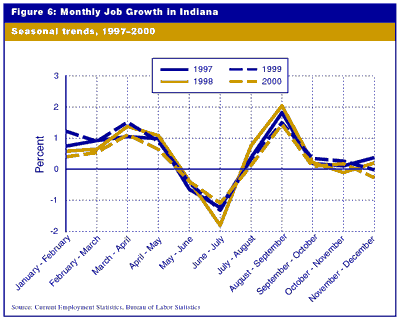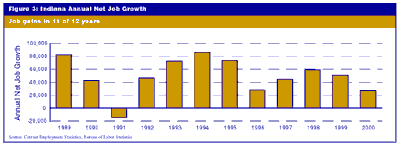Indiana and U.S. Show Similar Trends in Employment Growth
In 1988, total nonfarm employment in Indiana averaged approximately 2.4 million. The annual average for the year 2000 was approximately 3.0 million, or 25% more than in 1988. Over the same time period, U.S. average annual nonfarm employment also grew by approximately 25%.
The Current Employment Statistics survey (CES), developed by the U.S. Bureau of Labor Statistics, collects employment data from a sample stratified by industry, area and employer size in all industries except farming. The data are collected at the state level on a monthly basis and count employees in every skill class. CES data are available within a month of collection. According to CES data, Indiana also reflects the nation in terms of annual changes in employment. For both Indiana and the nation, only one year—1991—showed a decline in employment in the 1988-2000 period. This was the height of the 1990s recession. Indiana's total nonfarm employment over time is shown in Figure 1, while Figure 2 shows a similar pattern for the United States.
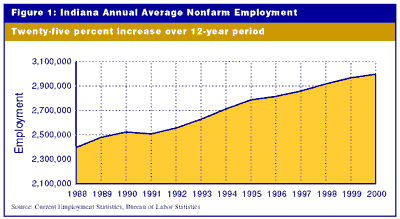
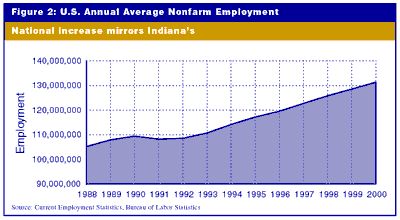
Job creation is a common benchmark used in economic development. Economic development officials are often judged by the number of jobs they helped create by providing financial support for location or expansion projects. Indeed, job creation is required for companies to obtain most state or local assistance for a project. However, it is not enough to only count the jobs created by new projects because at the same time some companies are expanding, others are reducing their workforce or closing down. The proper benchmark is net job creation, or the new jobs remaining after any job losses have been subtracted.
Using the CES data, it is possible to see the approximate number of net new jobs created in Indiana each year since 1988 (see Figure 3).
Net job creation peaked for the state in 1994, with 85,800 jobs added during the year. On average, jobs were created at an annual rate of 1.85% per year over this 12-year period, but actual rates from year to year ranged between positive 3.5% and negative 0.6%. As illustrated in Figure 4, similar variations are seen in the annual growth of U.S. nonfarm employment. These trends are also mirrored by changes in the annual Gross State Product (GSP) and Gross Domestic Product (GDP) (see Figure 5). Unfortunately, GSP data are only available through 1998, so it is not possible to see if this trend has continued to date.
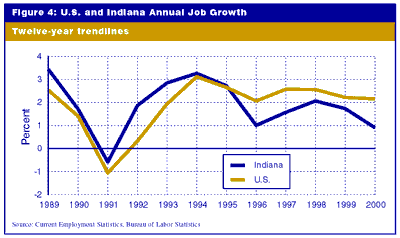
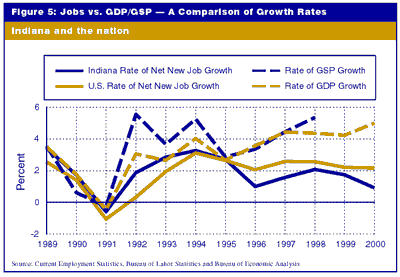
Net new employment can be calculated on a monthly basis as well as annually. However, monthly data are subject to seasonal changes in employment patterns, making them an inaccurate snapshot of employment status. For example, employment tends to drop significantly between June and July because teachers have their summer break.
Most years generally follow the same seasonal pattern, as shown in Figure 6 for the years 1997, 1998, 1999 and 2000. Nevertheless, using an annual average, as in this article, or a rolling average of 12 months is the best method for gauging job growth over time.
